Kim Koo revenges Empress Myeongseong, beating a Japanese assailant to death
By Prof. Dr. Lee Keun-yeop
I. Preface
Some say that Christian missionaries historically had two missions: "For the words of God and for the testimony of Jesus Christ" and "For the national interests". These are the guideline for understanding Dr. Underwood.
He was one of few bright stars in the galaxy of missionaries who landed on this leaning Hermit Kingdom in the latter part of the 19th century. Namely: Isabella Bird Bishop, a member of British Royal Geography Society. After traveling to Korea and the Maritime State of eastern Russia she depicted Donghaks (Learn Eastern Values farmers), "If we are to find patriotism anywhere in this corruption-ridden country, it is in the hearts of these (Donghak) farmers who swore loyalty to the Emperor. These farmers are armed reformers."
Homer B. Hulbert, a high school teacher, whom the Korean government invited from the United States. He taught the students the excellency of the Korean alphabet and brought up his student Chu Si-Kyeong to be the herald of Korean language studies.
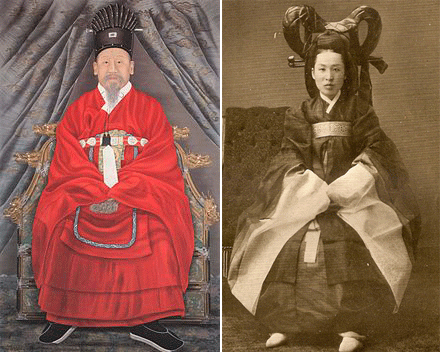
II. Dr. Horace Grant Underwood (1859-1916)
A. Family, schooling, aspirations:
“Underwood of Korea” by Lilias H. Underwood, his wife, is a revelation and inspiration. Readers may encounter the unique literary style of this medical doctor and her accurate observations and realistic descriptions. As we have Mentzu and Plato we have our perennial teachers Confucius and Socrates, so do we have Underwood through Lilias?
Father of Horace (b. in London) is John (b. in London, 1829). Horace's grandfather was Thomas. Thomas' father-in-law, Dr. Alexander Waugh, was an influential, powerful preacher in Scotland. He was deeply interested in foreign missions. His trait may have been handed down to his great grandson, Horace.
Horace's father, John, was a genius scientist and inventor. He compiled dictionaries and manufactured typewriters.
In fact the Underwood typewriters had been in wide use until 1960s in South Korea. Indeed his versatility seems to be handed down to his son, Horace. He pleased the Emperor and the Royal Family by jumping over a chair on a bicycle and by demonstrating ice-skating feats on the frozen pond of the Gyeonghoe-ru Pavilion in Seoul. His grandson, Professor Horace Grant Underwood of Yonsei University recounted, "My grandfather, Dr. Underwood, was a Pal-bang-mi-in (a can-do-everything man).
After the unexpected deaths of his beloved wife, daughter, and mother and succeeding business failure, he seriously thought of moving to the new world. He remarried. Horace and his brother Fred were sent to a seaside boys boarding school in Blougne, France. After two years at this school in 1872 Horace with his family moved to New York. There his family associated themselves with the Dutch Reformed Church. His worldwide mindset seems to have sprouted out of this association and the life in France.
He was first sent to Hasbrooke Seminary in Jersey City. In 1877 he began his course of study at New York University, graduating from it with a B.A. in 1881. He again entered the Dutch Reformed Theological Seminary in New Brunswick. He never had any sectarian, class, or race bias. He seemed to feel a real brotherhood with people of all races, nationalities, classes, ages, and sects.
Thinking of going to India he took a one-year course in medical school.
Later he seriously thought of going to Korea. But Korea at that time was a terra incognita to the western world and less than one in a hundred American-educated people knew the location, or heard the name of it.
The people, too, were supposed to be a wild sort of semi-savage, semi-barbarian race reflecting the death of Thomas on the American steamer General Sherman in 1866 in Pyongyang. But the Call of the Divine moved him to land on Jemulpo, now Incheon, on April 4, 1885.
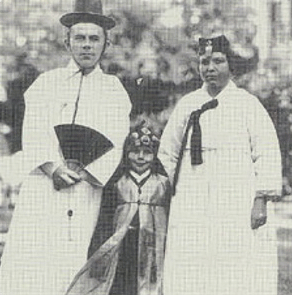
B. His footsteps in Korea
Life in Korea was not that easy. Sanitary situation in Seoul was indescribable with bad smells from filthy ditches. Epidemics such as typhoid, typhus, and small pox were common. Superstitions, shamans, and sorcerers controlled the doings of every household. In 1888 there spread a rumor of infant cannibalism.
In 1886 a Home and School for Orphan Boys was started (later Kyeongsin High School in Seoul) and Dr. Underwood became the director.
One day a four-year-old boy due to his young age was returned to his aunt in rural area. Upon hearing this Dr. Underwood set out in search of the child taking canned milk and medicine with him and found the child wailing for food and trying to chew the wall paper.
He took the child back to the Home, brought him up under his special care. The child later became Underwood's secretary and the superintendent of Kyeongsin High School. This child is the Korean independence fighter Kim Kyu-sik.
I find a match for Vietnam's revolutionary, President Ho Chi Minh, who spoke French, English, German, Russian and the southern Chinese accent freely, in Korean revolutionary, Kim Kyu-sik, who spoke English, French, German, Japanese, and Chinese mandarin accent freely. Was Kim affected by Underwood who referred to English, German, Latin, Greek, and Hebrew revised versions when he translated Mark's gospel? Is there any relation between Underwood's Korean name Doo Woo (杜尤) and Kim's pen name Woo Sa (尤史)?
The Underwoods enjoyed a special favor of the Emperor and the Empress. On the former's wedding celebration the royal family sent a pair of gold bracelets to Lilias and a pearl ring to Horace. The Underwoods always addressed the Emperor and Empress "Your Highness" or wrote "Your Majesty". Lilias called the Donghak farmers roving bands of outlaws somewhat like the Boxers of China, terrorist groups in contrast to Isabella Bishop's depiction, "These (Donghak) farmers are armed reformers".
I hear that somewhere in Dongnae in the port city of Busan stands the botanist Woo Jang-Chun's statue. His father Woo Bom-Seon was a traitor. He was the chief of trainers of the special garrison of the royal palace. In 1895 when Japanese assassins broke in into the palace Woo, instead of defending the Empress to the last, led the Japanese assassins to the Empress' bedroom to her tragic end. This guy escaped to Japan, married a Japanese woman, gave birth to Woo Jang-Chun. The traitor was later assassinated by a young Korean Go Yeong-Gun.
The only thought of 18-years-old Kim Chang-Su was to "revenge Mother of the Nation." At a ferry near the outlet of Daedong River flowing through Pyongyang he spotted a man hiding a sword inside his Korean robe. Thinking the guy was Goro Miura, the mastermind of the Japanese assailants of the Korean Empress, or one of his ring, Kim flew to him and, with one powerful kick, knocked him down on the ground, grabbing the guy's drawn sword he butchered the Japanese lieutenant officer. He left the scene, leaving a note, which read, "I, Kim Chang-Su from Kidong Village, Baekunbang Commune, Haeju City, killed a Japanese officer in revenging the Mother of the Korean Nation." The young Kim Chang-Su, we learn him later as Kim Koo, the chairman of the Korean Provisional Government in China during the WWII. Kim Kyu-sik was one of his cabinet members.
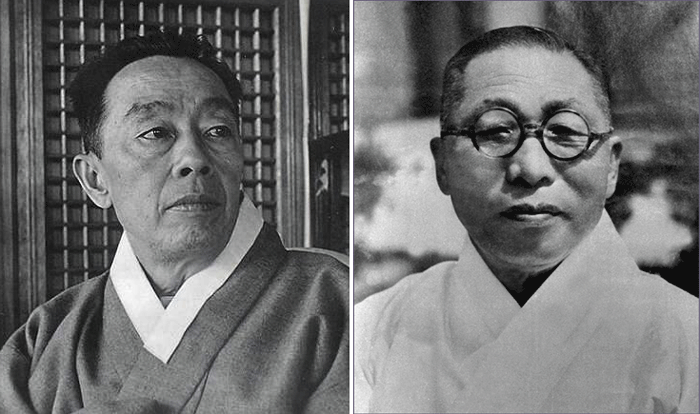
Case of Underwood was like this. Upon hearing report of the court tragedy he rushed to the palace with Dr. Avison, the founder of the Yonsei University Medical College, and Dr. Hulbert. At the main gate they were banned from entering by guard officers with drawn swords. Underwood struck up their swords with his revolver, and these ‘three musketeers’ entered the palace finding the Emperor and the Crown Prince trembling with panic.
They stood on midnight guard. As the Emperor was suspicious of all food prepared in the palace, the Russian Legation and Underwood family prepared the food on alternate days. The food was placed in a large tin cash-box with a Yale lock. The key was directly handed to the Emperor by Dr. Underwood.
They did it for seven weeks.
He travelled whole Korea, and a few times. Northward to Haeju, Pyongyang, and as far as Ganggye, southward to Chungju, Andong, and as far as Busan. Thus he followed the "St. Paul's trails" hustling to east and west, south on boat, north on pony.
He set up mission centers (churches) near a small hamlet three miles away from Busan Bay and on a hill overlooking the Bay. These are respectively Choeup Church the second oldest one in Korea and Choryang Church, the third oldest one after the oldest Saemunan Church in Seoul. A Unification activist Rev. Hong Gun-Su when young attended Choeup Church.
A young elementary school graduate boy was turning soils in the nearby soybean yard under the grilling sun. Woo Deok-Jun, a student of Yonsei University (then CCC, Chosen Christian College), approached him and invited him to attend church and go to Masan for a secondary school education.
But the boy's ailing father declined as the boy was the key manpower. After all the father complied with. This child was later the pastor of Seongnam Presbyterian Church, Chief Chaplin of Yonsei University, Dean of Hankuk Theological Seminary, and the author of a hymn. He is Dr. Kim Jeong-Jun. He told this story to me in person one day in the mid-1970s. In 1959 I directed the High Schoolers choir at Choryang Church.
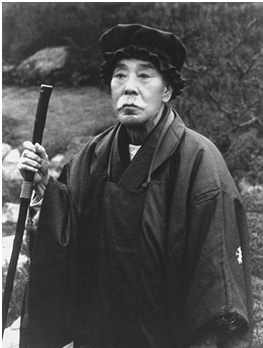
In 1987 in my class at the Presbyterian Theological Seminary in eastern Seoul I revealed the following fact. We have in our hymnal books melodies of foreign national anthems such as "Deutschland, Deutschland, uber alles..." of Germany, "God Save Our Gracious Queen..." of England, melody of la Marsailles of France, and that of Russia.
The Student Union submitted a question note demanding the reason for this to the Presbyterian annual general assembly. The assembly was mute. Instead the assembly put the Korean national anthem inside the cover of revised hymnal books for some time.
On October 6, 8, 10 of the last year at Yonsei University Library I referred to the first Korean hymnal book compiled and translated by Dr. Horace Grant Underwood in 1894 and the revised version of 1896 and found no melodies of foreign national anthems.
In the 1898 version I found only "God Save Our..." melody. This melody was sung in chorus on the occasion of Emperor Gojong's birth anniversary service held at Saemunan Church in 1886. This is to confirm Dr. Underwood is not to blame for carrying those melodies in Korean hymnal books against some critics.
His vision for founding a Christian college in Seoul, for all Dr. Avison's support, met a critical time when the Presbyterian Mission Board ruled out the use of $10,000 for this purpose in 1909. In 1910 the Board even discarded the plan. Yet, amid the disappointment and strain, he with his indomitable will in 1915 founded the Chosen Union Christian College in YMCA building. He was the principal. Few years later after the Japanese Governor's Office granted the founding of Chosen Christian College in 1916, this institution was moved to Yeonhui-myeon of Goyang County (site of Yonsei University today) and was renamed as Yeonhui College. This is the predecessor of Yonsei University. Yonsei, You, ever be on forward! I feel very grateful to the founder and the Providence as an alumnus of this institution full of memories and historical legacies.
In 1916 Dr. Horace Grant Undewood due to definitely failing physical condition left Korea to which he would never return as a "flesh", arriving in Atlantic City, where he calmly breathed his last on the morning of October 12 that year.
Professor Underwood of Yonsei University, my director for M. Ed. degree, talked of his Grandfather, "In one word he is a giant". Throughout his life in Korea his devotion was only to awakening and civilizing of the Korean people, not in the least to the US national interests. He truly was a Giant of Korea.
__________
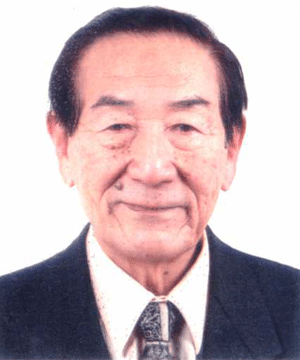
Dr. Lee Keun-yeop, former professor of Yonsei University, taught education philosophy. Currently he is the director of Korean Academy of Social Sciences on Vietnam (KASSV). He is a founding member of the Korean Association for East Europe and Bulkan Studies. He can be contacted by phone number 010-7220-8985.
Left: Emperor Gojong of the Empire of Great Han (Korea)
Right: Empress Myeongseong, who was murdered by the Japanese.
Dr. Horace Grant Underwood (left), founder of the Yeonhui College (now Yonsei University), and family. Prof. Lee Keun-yeop calls him a ‘Giant of Korea.’
Left: Kim Kyu-sik, a minister of the provisional government led by Kim Koo.
Right: Korean Independence Fighter Kim Koo who headed the provisional government of the Republic of Korea in exile in China
Japanese swordsman, Goro Miura (1846-1926), who murdered Empress Myeongseong, with a group of Japanese Ronin (hoodlums).
Dr. Lee Keun-yeop, former professor of Yonsei University

